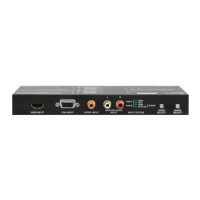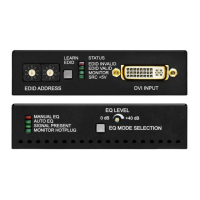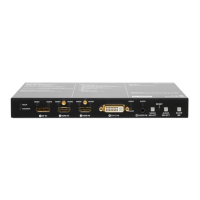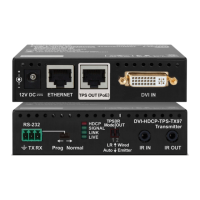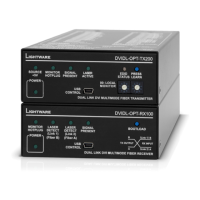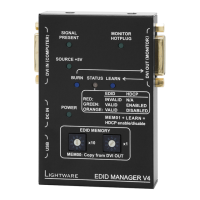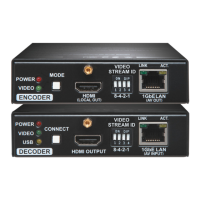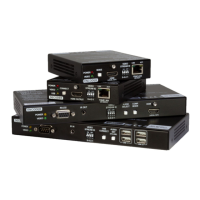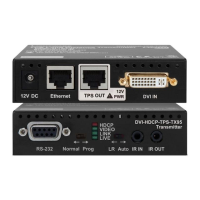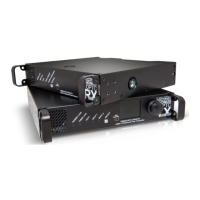UMX-OPT-TX150R
User’s Manual
Section 9. Software control – Using the Lightware Matrix Controller Page 63 / 107
Audio auto select
The audio Autoselect settings are available in this drop-down menu. It can be
Static select (Digital + embedded, DVI-A + Audio 1, VGA + Audio 2),
First detect (Embedded, SPDIF, Analog 2),
Priority detect (Embedded, S/PDIF, Analog 2),
Priority detect (S/PDIF, Embedded, Analog 2),
Priority detect (Embedded, Analog 2),
Priority detect (S/PDIF, Analog 2),
Fix select (Embedded),
Fix select (Analog 1),
Fix select (Analog 2),
Fix select (S/PDIF),
For detailed description about audio Autoselect please read chapter 6.7 on page 35.
Optical parameters
Optical parameters give information about the device’s optical module and the type of the
connector.
Info: These fields are filled automatically by the device after the examination of the signal.
9.4. EDID menu
Advanced EDID Management can be accessed by clicking on the EDID menu. This view
is divided in two segments. The upper segment can be opened by clicking the green
arrow. This segment contains the EDID editor. The lower segment is the EDID router
area. This consists of two list windows, which can display a selected part of the EDID
memory.
Info: When the user enters the menu for the first time, the software starts to download the
whole EDID list from the device. It may take about 30-40 seconds.
9.4.1. EDID Router operation
After the list is downloaded, the current status is shown. The EDID memory consists of
four parts. Any memory part can be displayed on either side by using the drop down lists.
The Emulated EDID List shows the currently emulated EDIDs for each input. It contains
the resolution, manufacturer and vendor name of the EDID reported to the sources for
each input separately. The source column displays the memory location that the current
EDID was routed from.
The Last attached Monitor's EDID List contains the resolution, manufacturer and
vendor name of the display devices connected to device's output. The device remembers
the last display device’s EDID, so there is an EDID shown even if there is no device
attached to the transmitter’s output at the moment.
The Factory EDID List shows the factory memory locations (01# - 20#) with
preprogrammed EDID.
The User EDID List shows the memory locations (21# - 36#) which can be used by the
user to save custom EDIDs.
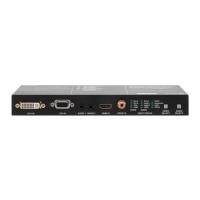
